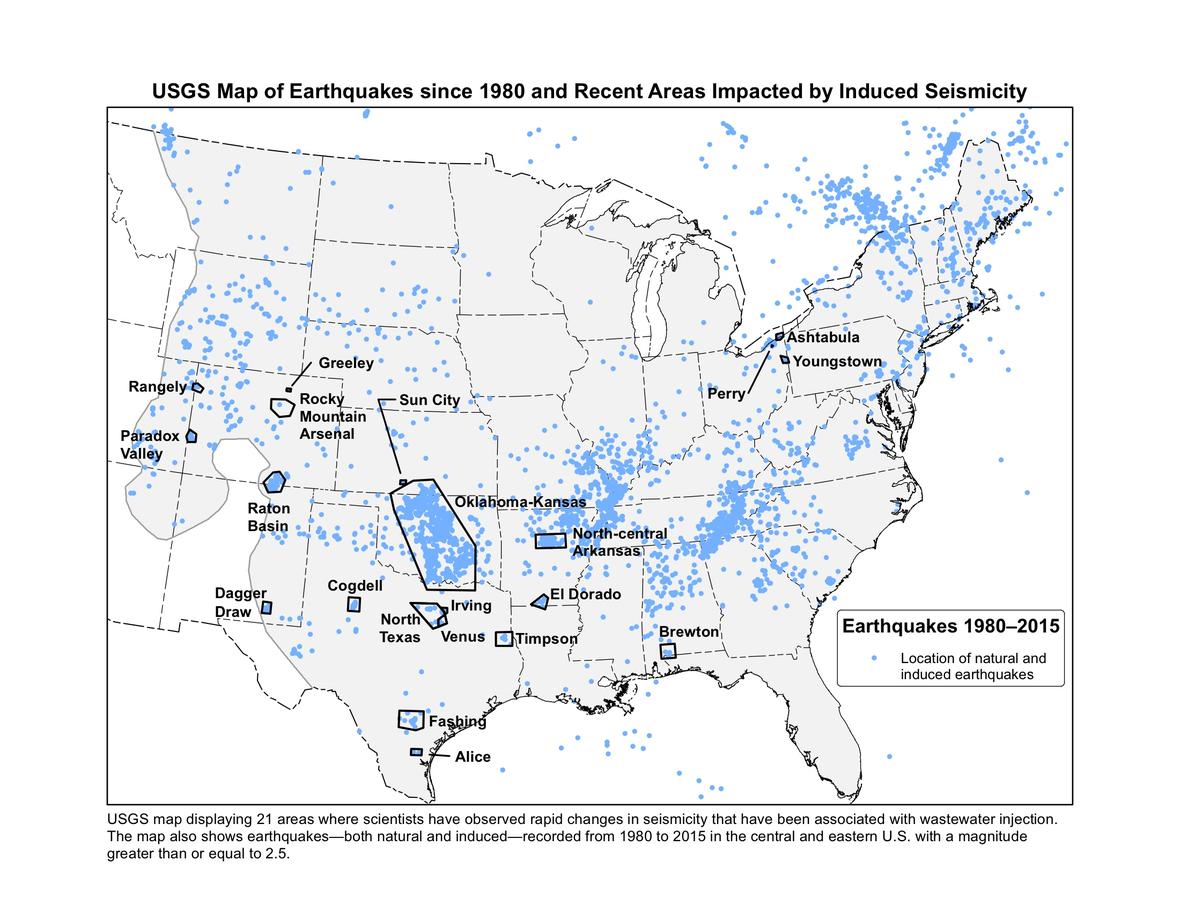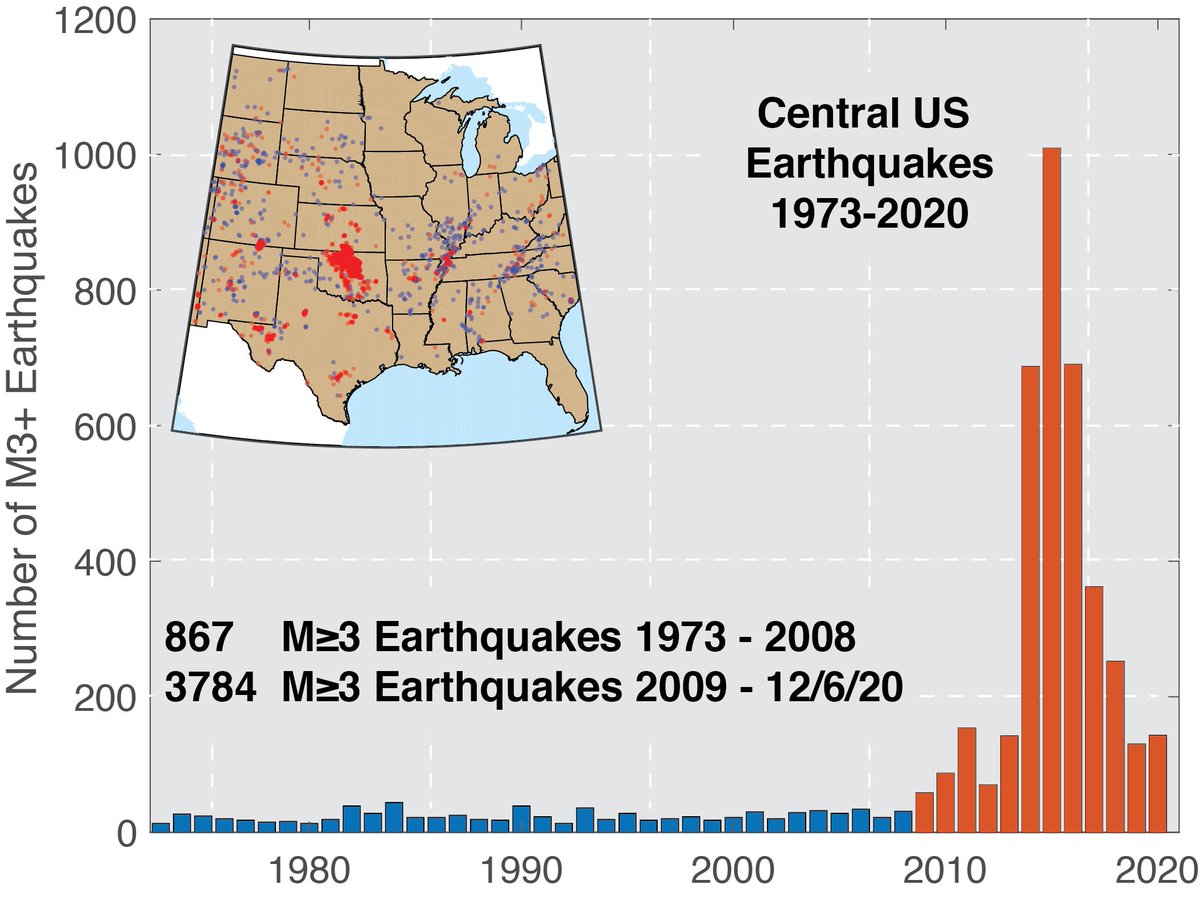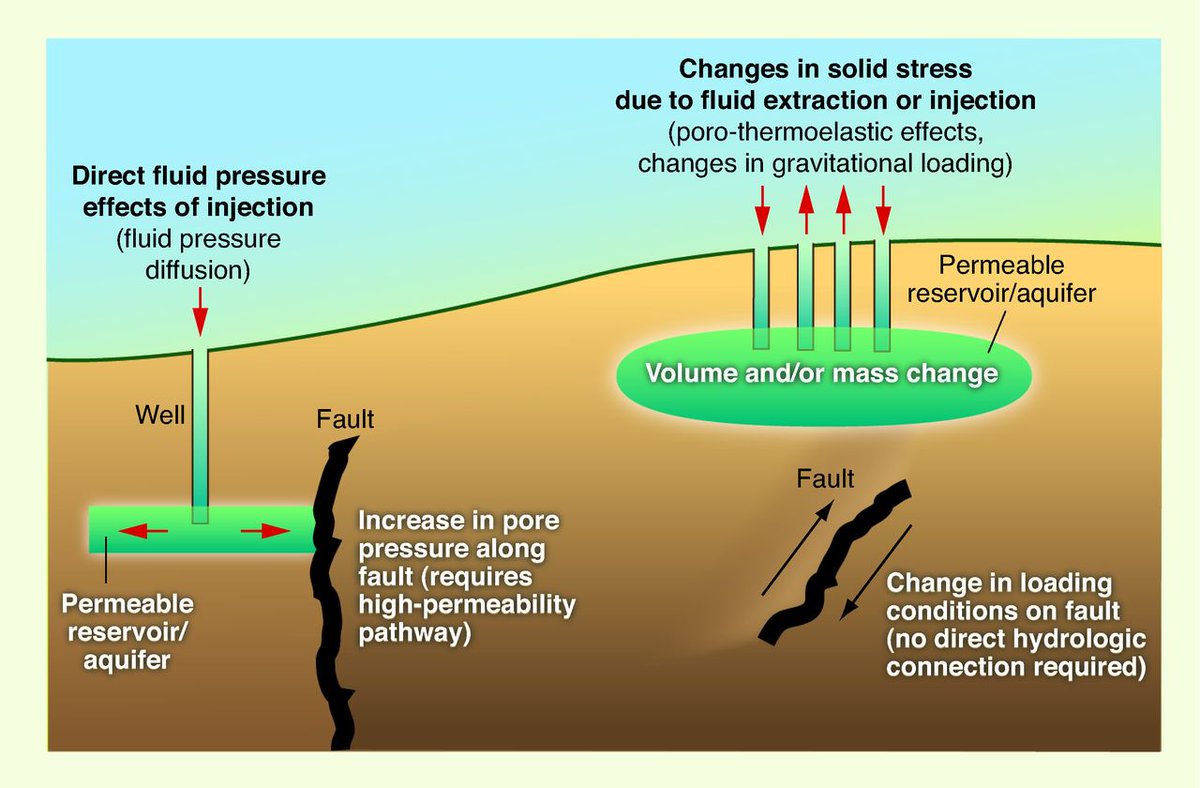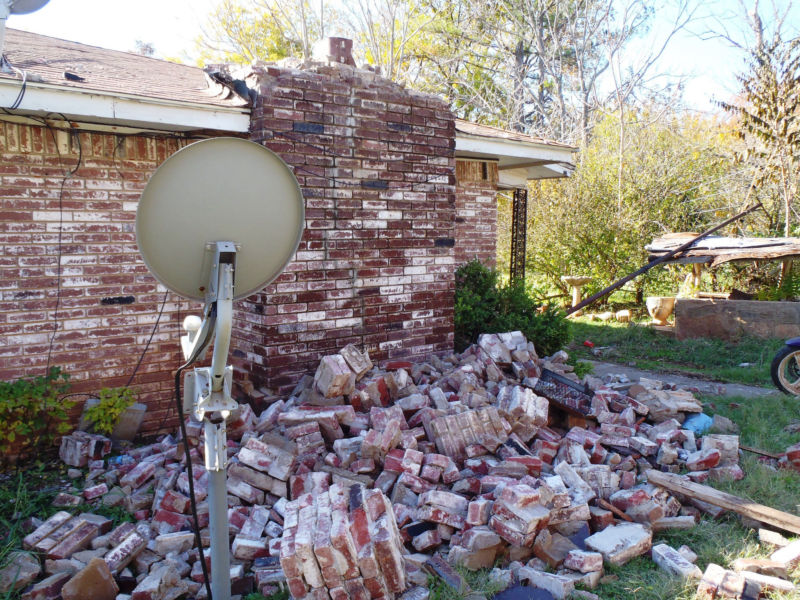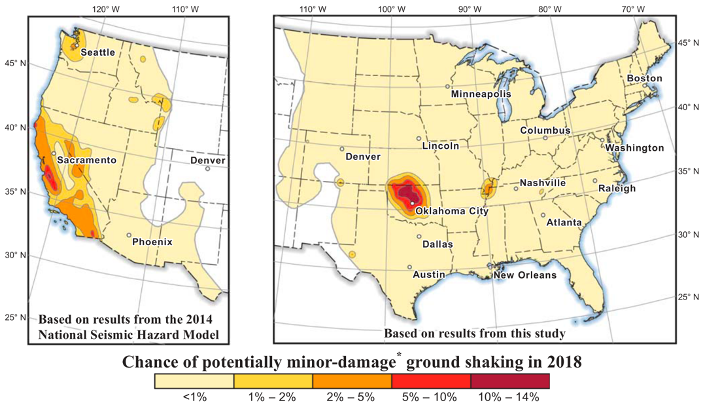If you're in a Central or Eastern state in the U.S., you probably once thought earthquakes didn't happen near you. However, starting about 10 years ago you may have noticed more earthquakes than ever before. But why?
First, let's look at how the number of earthquakes per year has changed through time. See how the number of earthquakes went from just a few per year (blue) to up to a thousand (red)? It turns out humans are good at causing earthquakes!
Human activities, like drilling for natural gas or oil and injecting the resulting wastewater into the ground, can cause earthquakes. Injecting in or withdrawing fluids from the subsurface changes the conditions on geological faults.
Injecting wastewater into the ground is responsible for the majority of induced (human-caused) earthquakes in the Central and Eastern United States over the past decade.
An example of a wastewater-injection-caused earthquake is the 2011 M5.7 Prague, Oklahoma earthquake. That event was widely felt across the Central US and caused some local damage. https://www.usgs.gov/media/images/house-damage-2011-oklahoma-earthquake
Hydraulic fracturing (HF), a process to extract resources, can also cause quakes. In some counties in Oklahoma and Texas almost all earthquakes are linked to HF. But, across the US only a small portion of all quakes are linked directly to HF.
While most earthquakes induced by hydraulic fracturing are small, we still need to keep an eye on them. The largest earthquake in the US attributed to hydraulic fracturing was a Mw 4.0 in Texas, but larger events have occurred globally. https://www.usgs.gov/faqs/does-production-oil-and-gas-shales-cause-earthquakes-if-so-how-are-earthquakes-related-these
The USGS produces maps of hazard from wastewater induced earthquakes, and we continue to work on understanding the best ways to reduce the hazard from these human-caused quakes. https://www.usgs.gov/natural-hazards/earthquake-hazards/science/hazard-estimation-induced-earthquakes
Want to know more about human-induced earthquakes, including myths and misconceptions? Visit: https://www.usgs.gov/natural-hazards/earthquake-hazards/science/myths-and-misconceptions-about-induced-earthquakes
Want to learn about research the USGS is conducting to understand these events and their associated hazards? Visit: https://www.usgs.gov/natural-hazards/earthquake-hazards/induced-earthquakes

 Read on Twitter
Read on Twitter